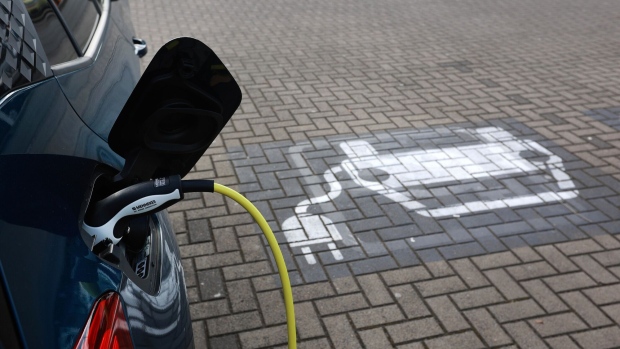Jun 16, 2023
Germany to Cut Power for EVs and Heat Pumps During Bottlenecks
, Bloomberg News

(Bloomberg) -- Germany wants to allow electricity grid operators to reduce power supply for controllable consumption devices such as electric cars or heat pumps when bottlenecks occur.
Such last-resort interventions “should only be possible to the extent that is technically necessary,” said Klaus Müller, president of the country’s network regulator. Germany is struggling to expand its grids, which are often not fit to supply such power-hungry devices, a reason why some operators have refused to connect them in the past.
The federal agency will now require grid operators to provide such connections, and in turn grant them more flexibility to manage the grid. The country’s car industry has opposed interventions during the charging process, arguing that such measures could inhibit the ramp-up of electro-mobility.
The regulator’s proposal also states that in the case of a bottleneck, grid operators must swiftly act to expand their power lines. Electricity for such devices would be reduced to a minimum of 4.2 kilowatts — half a kilowatt more than initially proposed — ensuring that households can still operate heat pumps and charge e-cars, even if at a slower pace. A vehicle charged for two hours could still gain a range of 50 kilometers (31 miles) under that scenario.
The agency also proposed flexible power tariffs to incentivize consumers to shift their usage to times of lower electricity demand. The rules can still be discussed with stakeholders and should be implemented in January 2024.
Germany’s VDA lobby group for the auto industry said the proposal contained significant improvements compared to earlier versions.
“Without the additional introduction of time-variable grid charges, there would have been a threat of too frequent direct control interventions by the grid operator,” said Hildegard Müller, president of the VDA. It’s important that both measures start at the same time, she added.
(Updates with auto lobby reaction in final two paragraphs. A previous version of the story corrected the power unit in the fourth paragraph.)
©2023 Bloomberg L.P.






